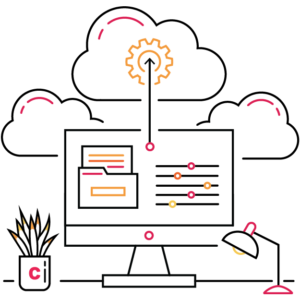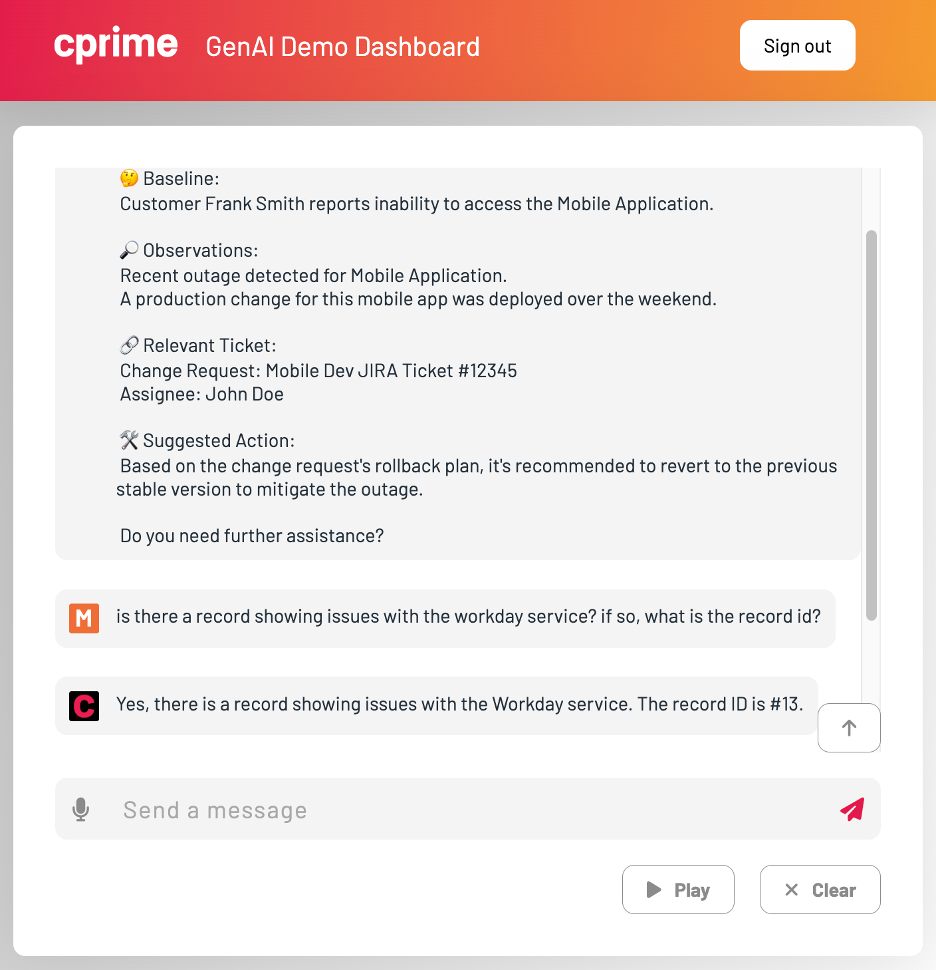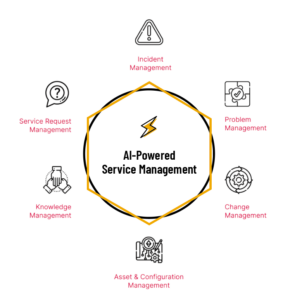Atlassian Cloud adoption FAQs addressed in this article:
-
What are the benefits of Atlassian Cloud Adoption? – Atlassian Cloud Adoption offers exclusive cloud-only features, enhanced security and control for enterprises, seamless integration, and collaboration across teams, and leverages AI and automation to streamline workflows.
-
How does Atlassian Cloud ensure data residency and compliance? – Atlassian Cloud provides data residency options allowing customers to select specific regions for data storage, ensuring compliance with local laws and regulations, and undergoes regular audits to meet global security standards.
-
What exclusive features does Atlassian Cloud offer? – Exclusive features include Jira Work Management for business teams, Jira Product Discovery for product management, advanced security protocols, and AI-driven automation for enhanced productivity.
-
Why is Cprime the ideal partner for Atlassian Cloud migration? – Cprime, an Atlassian Platinum Solution Partner, offers expert guidance, tailored migration strategies, and ongoing support to ensure organizations maximize their investment and achieve successful digital transformation with Atlassian Cloud.
-
How does Atlassian Cloud enhance team collaboration? – Atlassian Cloud enhances team collaboration by offering tools like Trello, Bitbucket, and Statuspage within its ecosystem, supporting real-time collaboration, instant communication, and providing a single source of truth for projects.
-
What role does AI and automation play in Atlassian Cloud? – AI and automation in Atlassian Cloud automate routine tasks, provide actionable insights, facilitate smarter decision-making, and streamline processes, allowing teams to focus on higher-value activities.
-
How can organizations maximize their cloud potential with Cprime? – Organizations can maximize their cloud potential by leveraging Cprime’s comprehensive cloud migration services, which include assessment, customized migration planning, workflow optimization, and continuous support for long-term success.
The shift towards cloud computing is not just a trend but a strategic move for businesses aiming to harness the power of innovation and agility. The cloud transformation journey offers a plethora of benefits, including enhanced security, scalability, and access to cutting-edge features that are only available in cloud environments. Atlassian, a leading provider of collaboration and productivity software, is at the forefront of this transformation, advocating for a comprehensive migration to the cloud across all user bases, regardless of size or industry.

Understanding the significance of this shift, a recent webinar titled “Harnessing Atlassian’s Power Through Cloud Transformation and Adoption” served as a valuable resource, packed with insights into the advantages of cloud adoption and the exclusive features that Atlassian Cloud offers. This educational session aimed to demystify the cloud migration process and highlight the transformative potential of embracing Atlassian Cloud solutions. As businesses consider the leap towards cloud adoption, the insights from this webinar provide a solid foundation for understanding the why and how of making this strategic move.
Transitioning to the cloud is not merely about keeping up with technological advancements; it’s about seizing the opportunity to revolutionize how your organization operates, collaborates, and innovates. Atlassian’s commitment to cloud-first development underscores the importance of staying ahead in a competitive landscape where agility and adaptability are key to success. Let’s delve deeper into the drive towards cloud adoption and explore how Atlassian’s cloud platform is setting new standards for collaboration and productivity tools in the digital age.
Why the Cloud? Unpacking Atlassian’s Vision for Tomorrow
The drive towards cloud adoption is fueled by a clear vision from Atlassian: to bring all users into a future where cloud platforms unlock unprecedented levels of innovation, efficiency, and scalability. This commitment is not just about transitioning to a new technology platform; it’s about embracing a future where the cloud is the foundation for all digital operations. Atlassian’s cloud-first approach is designed to ensure that organizations, regardless of their size or industry, have access to the most advanced features, security enhancements, and integrations available today.
One of the most compelling reasons for organizations to consider this migration is the concept of FOMO – the Fear Of Missing Out. In the context of Atlassian Cloud, FOMO is not just a buzzword but a reality for businesses that continue to rely on traditional, on-premises solutions. The cloud environment is where Atlassian’s newest innovations, from AI-driven automation to advanced security protocols, are rolled out first. These are not mere incremental updates but transformative features that can significantly enhance how teams collaborate, manage projects, and deliver value to customers.
For instance, cloud-only features such as advanced roadmapping in Jira Software Cloud or the new Premium Plan’s analytics and insights capabilities are designed to provide teams with the tools they need to stay ahead. These features are exclusive to the cloud and represent Atlassian’s investment in a future where cloud-based collaboration is the norm. The message is clear: the future of work is on the cloud, and Atlassian is leading the way with a platform that not only meets the current needs of businesses but anticipates their future challenges and opportunities.
Unlocking New Horizons: Atlassian’s Exclusive Cloud Innovations
Atlassian Cloud stands out not only for its robust platform that supports seamless collaboration and productivity but also for its exclusive, cloud-only features and innovations. These offerings are central to Atlassian’s vision of providing a superior experience that leverages the full potential of cloud computing. Through the Point A program, Atlassian’s innovation hub, the company continuously rolls out new products and features designed specifically for the cloud environment. This initiative underscores Atlassian’s commitment to pushing the boundaries of what collaboration and project management tools can achieve in a cloud-first world.
Exclusive Cloud-Only Products
Among the standout innovations from the Point A program are Jira Work Management (JWM) and Jira Product Discovery (JPD). Jira Work Management is a solution tailored for business teams outside the traditional software development sphere, such as marketing, HR, and finance. It simplifies task management and enhances cross-team collaboration without the complexity of software development features. This makes it an ideal tool for organizations looking to streamline operations and improve productivity across all departments.
Jira Product Discovery, on the other hand, is designed for product management teams. It offers a dynamic environment for brainstorming, prioritizing, and tracking new product ideas from inception to launch. This tool addresses the unique needs of product teams, providing them with the resources to innovate rapidly and respond to market changes with agility.
Enhanced Security and Control for Enterprises

For enterprise customers, Atlassian Cloud offers a suite of features that provide enhanced security, data governance, and control. Access to encryption keys hosted in the customer’s AWS account, the ability to revoke these keys, and improved data governance protocols are just a few examples of how Atlassian Cloud prioritizes security and compliance. These features are particularly important for organizations with stringent regulatory requirements, offering them the peace of mind that their data is protected and their operations comply with relevant laws and standards.
The Impact of Cloud-Only Features
The introduction of cloud-only features and products represents a significant advantage for organizations that choose to migrate to Atlassian Cloud. These innovations not only enhance the functionality and efficiency of collaboration tools but also ensure that businesses have access to the latest security measures and compliance protocols. By choosing Atlassian Cloud, organizations are not just adopting a new technology platform; they are embracing a future where innovation, security, and collaboration are seamlessly integrated into their operations.
As we delve deeper into the benefits of Atlassian Cloud, it becomes clear that the platform’s exclusive features and continuous innovation are key drivers for organizations considering cloud migration.
Navigating the Global Data Landscape: Compliance Made Easy
Data residency and compliance are critical considerations for any organization contemplating a move to the cloud. In an era where data protection laws and regulations vary significantly across regions, the ability to control where data is stored and processed is paramount. Atlassian Cloud addresses these concerns head-on by offering data residency options that empower organizations to meet their compliance and regulatory requirements without compromising on functionality or performance.
Data Residency Options
Atlassian Cloud allows customers to select specific regions for data storage, ensuring that their data remains within a geographical location that complies with local laws and regulations. This feature is particularly beneficial for organizations operating in sectors with stringent data protection standards, such as finance, healthcare, and government. By providing the flexibility to choose where data is stored, Atlassian Cloud not only enhances data security but also builds trust with customers and stakeholders concerned about data privacy.
Compliance with Global Standards
In addition to data residency options, Atlassian Cloud is designed to meet the highest standards of security and compliance. The platform undergoes regular third-party audits and certifications to ensure it aligns with global security frameworks and standards. This commitment to security and compliance is a testament to Atlassian’s dedication to providing a cloud platform that organizations can rely on for their most critical operations.
The significance of data residency and compliance cannot be overstated in the decision-making process for cloud migration. Atlassian Cloud’s robust offerings in this area provide organizations with the assurance that their data is not only secure but also managed in accordance with the relevant legal and regulatory requirements. This level of control and compliance is a key factor in the growing adoption of Atlassian Cloud among businesses seeking a reliable and compliant cloud solution.
Transforming Workflows: The Power of AI and Automation in Atlassian Cloud

Beyond data residency and compliance, Atlassian Cloud is at the forefront of leveraging artificial intelligence (AI) and automation to enhance productivity and efficiency. The platform incorporates AI-driven features that automate routine tasks, provide actionable insights, and facilitate smarter decision-making. From automating ticket assignments in Jira Service Management to offering predictive text in Confluence, AI and automation are integral to the Atlassian Cloud experience.
These AI-powered capabilities not only streamline workflows but also free up teams to focus on higher-value activities. By reducing manual effort and minimizing the potential for human error, Atlassian Cloud enables organizations to achieve greater operational efficiency and deliver better outcomes for their customers.
The integration of data residency, compliance, AI, and automation into Atlassian Cloud exemplifies Atlassian’s commitment to providing a comprehensive, secure, and innovative platform.
Breaking Down Silos: Seamless Collaboration in the Cloud Era
Integration and collaboration across teams are fundamental to the success of any organization in today’s fast-paced business environment. Atlassian Cloud excels in this area by offering a suite of tools designed to foster seamless collaboration, streamline workflows, and connect disparate teams and tools within a unified ecosystem. This capability is crucial for organizations aiming to break down silos, enhance communication, and drive efficiency across all levels of operation.
Seamless Integration Across Tools and Teams
Atlassian Cloud’s robust integration capabilities allow for the seamless connection of various tools and applications, both within the Atlassian suite and with third-party services. This interoperability is key to creating a cohesive work environment where information flows freely, and teams can access the resources they need without switching between multiple platforms. For instance, Jira’s integration with Confluence enables teams to link project documentation directly to tasks and sprints, ensuring that all relevant information is easily accessible and up to date.
Moreover, Atlassian Marketplace extends these integration capabilities by offering thousands of apps and integrations that cater to specific needs, from time tracking and reporting to asset management and beyond. This ecosystem of add-ons enhances the flexibility and adaptability of Atlassian Cloud, allowing organizations to tailor the platform to their unique workflows and requirements.
Enhancing Collaboration and Productivity
Beyond integration, Atlassian Cloud is designed to enhance collaboration and productivity across teams. Tools like Trello for project management, Bitbucket for code collaboration, and Statuspage for incident communication are all part of the Atlassian Cloud ecosystem, each contributing to a more collaborative and efficient work environment. These tools, combined with Atlassian’s cloud infrastructure, enable real-time collaboration, instant communication, and a single source of truth for projects and tasks, regardless of team location or size.
The emphasis on collaboration extends to Atlassian Cloud’s security and administration features, which are designed to facilitate secure collaboration both within organizations and with external partners. With features like advanced permissions, audit logs, and secure guest access, teams can collaborate confidently, knowing that their data and workflows are protected.
The Impact of Enhanced Integration and Collaboration
The impact of Atlassian Cloud’s enhanced integration and collaboration capabilities cannot be overstated. By providing a platform that not only supports but actively promotes seamless collaboration and integration, Atlassian Cloud empowers organizations to operate more efficiently, innovate faster, and deliver superior results. This approach to integration and collaboration is a testament to Atlassian’s understanding of the challenges and opportunities facing modern businesses and its commitment to providing solutions that address these needs head-on.
Maximizing Your Cloud Potential: The Cprime Advantage
As organizations contemplate the journey towards digital transformation, the path forward with Atlassian Cloud is clear. However, navigating the complexities of cloud migration and maximizing the benefits of Atlassian Cloud requires expertise and experience. This is where Cprime, an Atlassian Platinum Solution Partner, plays a pivotal role. Cprime’s deep expertise in Atlassian Cloud migrations and tailored solutions empowers organizations to harness the full potential of cloud computing, ensuring a smooth transition and successful adoption.
Leveraging Cprime’s Expertise for Cloud Migration
Cprime’s comprehensive approach to cloud migration begins with a thorough assessment of an organization’s current state, goals, and challenges. This initial step ensures that the migration strategy is aligned with the organization’s objectives, addressing key concerns such as data residency, compliance, and integration needs. Cprime’s team of experts then designs a customized migration plan that minimizes disruption, ensures data integrity, and leverages Atlassian Cloud’s features to enhance collaboration, security, and productivity.
Tailored Solutions for Maximizing Cloud Benefits
Beyond the technical aspects of migration, Cprime focuses on the broader implications of cloud adoption for business operations. This includes optimizing workflows, implementing best practices for collaboration and project management, and leveraging AI and automation to streamline processes. Cprime’s solutions are designed not just to migrate data and applications to the cloud but to transform how organizations work, unlocking new levels of efficiency and innovation.
Continuous Support and Optimization
The journey doesn’t end with migration. Cprime provides ongoing support and optimization services to ensure that organizations continue to derive maximum value from Atlassian Cloud. This includes regular reviews of cloud usage, performance tuning, and the implementation of new features and integrations as they become available. Cprime’s commitment to continuous improvement ensures that organizations remain at the forefront of cloud-based collaboration and productivity.
Are You Prepared for Optimal Atlassian Cloud Adoption?

The move to Atlassian Cloud represents a significant opportunity for organizations to enhance their operations, foster innovation, and stay competitive in a rapidly changing business landscape. With its comprehensive suite of tools, exclusive cloud-only features, and robust security and compliance capabilities, Atlassian Cloud is poised to drive the future of work. However, realizing the full potential of this platform requires careful planning, expert guidance, and ongoing support.
Cprime, with its deep expertise in Atlassian Cloud migrations and commitment to tailored solutions, is the ideal partner for organizations looking to embark on this transformative journey. By leveraging Cprime’s services, businesses can navigate the complexities of cloud migration with confidence, ensuring a successful transition and long-term success in the cloud.
















